The Defense Commissary Agency (DeCA), headquartered at Fort Gregg-Adams in Virginia, operates a worldwide chain of 235 commissaries providing groceries to U.S. military personnel, retirees, service-related disabled veterans and their families. Under the leadership of Director and CEO John Hall, DeCA is aiming to significantly boost sales and savings for its patrons.
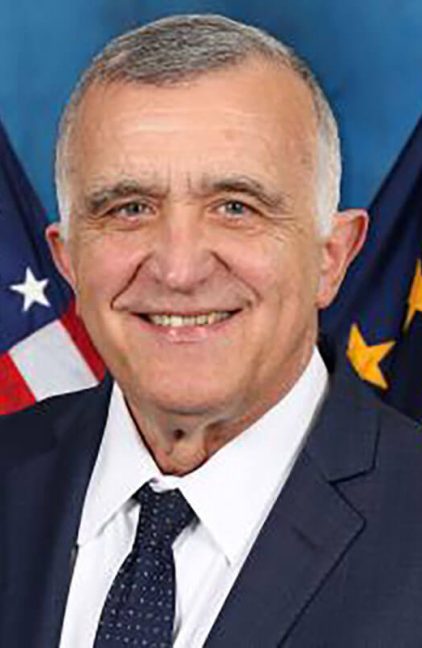
Hall, who has served as DeCA director since June 2023, has set a goal to reach $8 billion in sales by 2028. DeCA currently generates $4.7 billion in sales annually. By growing sales, the agency will be able to deliver even greater savings to customers.
A non-profit agency, DeCA receives appropriated funds from Congress through the Department of Defense. In fiscal year 2023, DeCA received about $1.4 billion in appropriated dollars, Hall said.
“We returned nearly $1.6 billion in savings, specifically, $112 million more in FY23 in savings to our customers than we received in appropriated dollars to run the Defense Commissary Agency,” he said.
From 2022-23, DeCA sales grew by nearly 10 percent. In 2024, Hall said growth is expected at about 3 percent, “which is a little lower than we wanted but higher than the commercial grocery industry.”
The growth in recent years follows a period of declining sales.
Hall said DeCA had achieved $6 billion in sales in FY2012. That was followed by about 10 years of declining revenue, which he attributed to the use of a cost-plus 1 percent pricing model. The agency now uses a variable pricing model.
He added that the goal to drive sales to $8 billion is “all about increasing savings to our customers. When we get to $8 billion in sales, that $112 million return on investment becomes a $1.1 billion return on investment. Increased sales generate increased savings for our customers. That is the reason we’re driving ourselves to achieve such a stretch goal.”
Jim Flannery, chief transformation officer for DeCA, said the commissary benefit is part of the military pay and benefits package. By law, DeCA must provide a 23.7 percent savings over what its patrons can get outside the gate, he noted. Recently, the agency has worked with the Secretary of Defense to take that savings up to 25 percent.
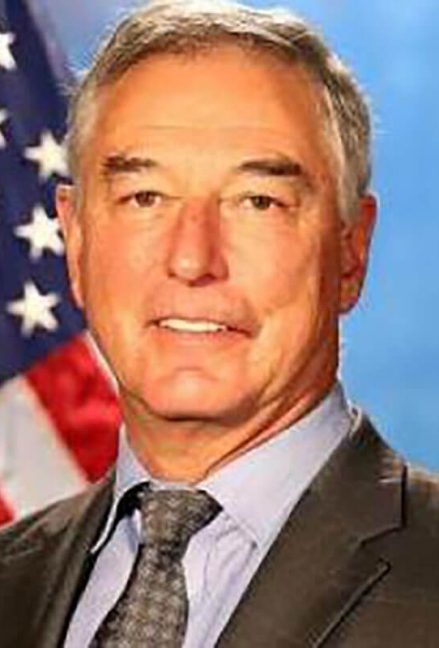
“The more revenue we generate, the more 25 percent savings we deliver. We amplify what Congress gives us. We turn back to our military patrons more than the taxpayers fund us. By 2028, we are pretty confident we’re going to give back twice as much in savings as we received in appropriations to our patrons,” Flannery said.
The savings puts real dollars in the pockets of commissary patrons.
Hall added that the variable pricing model enables DeCA to sell key value items such as milk, bread, eggs and diapers at a greater savings rate.
“For example, we save about 35 percent on meat for our customers. We invest in those items. We essentially subsidize those items so that we can sell them at an even lower price. For those things that our customers really need, we generate really excellent savings,” Hall explained.
Rebuilding brand
DeCA is working to rebuild its brand and to get more shoppers into the stores.
“We still have a perception out there that we’re not saving [customers] as much as we actually are, but we have the data to demonstrate that. We set the goal a year ago and have multiple building blocks that have dollar goals associated with them that will get us to $8 billion,” Hall said.
He also noted that while there is no sales tax on commissary purchases, there is a 5 percent surcharge. Those dollars are used to invest in improving DeCA’s infrastructure, which Hall said is a “serious challenge.” He added that the 25 percent savings includes that 5 percent surcharge.
“Because of those 10 years of declining sales, we didn’t generate the surcharge we needed to routinely replace things like chillers and freezers, those things needed to maintain store operations,” he said.
As a result, the agency is in “a little bit of a hole,” with about a $3.2 billion bill to pay. Hall said DeCA is working with Congress and others to get some appropriated dollars to help pay that bill.
[RELATED: DECA Important Benefit For Military Personnel, Families]
Spreading the word
In an effort to eliminate misconceptions that still linger about using the commissary benefit – and to reach eligible patrons who are not using their benefit – DeCA has increased its outreach. One initiative, DeCA Outside the Walls, delivers the benefit outside the walls of the commissary, as its name suggests.
Hall said the Army has kiosks that it operates in areas convenient to where soldiers live and/or work. DeCA supplies the kiosks, which makes access to the benefit far easier, he added.
Other initiatives include making bulk deliveries to certain locations. These include isolated areas that don’t have a commissary. Hall said these locations have increased from about 12 last year to 38 in 2024.
“There’s a lot of expanding the benefit and delivering the benefit to locations other than the stores themselves,” he said.

Navy Command Master Chief Mario Rivers, senior enlisted advisor to the DeCA director, is working to reach out to junior enlisted service members to help them understand that they have access to the commissaries.
Doing so can help fight food insecurity. DeCA is committed to providing service members and their families “with the resources that are necessary to access an adequate amount of nutrition without sacrificing the quality of their life,” Rivers said.
Many of the junior enlisted may feel that the commissary is not for them – that they don’t belong in there. “I talked to a lot of young service members who won’t shop in the commissary predicated off of that fact,” Rivers said.
He and his team are working to dispel those misconceptions by talking not only to active-duty service members but those who are retired or who have a certain level of service-related disability. They are going to the boot camps and visiting veterans’ organizations, “trying to find those pockets of folks who may not feel as if they’re an eligible patron. We’re tackling that day in and day out,” Rivers said.
He added DeCA also works to educate these groups on the fact that the commissaries accept SNAP and WIC in-store and also via DeCA’s e-commerce platform, which includes Commissary CLICK2GO.
“This is something that’s an ongoing battle,” Rivers said. “It’s all about education, ensuring that folks understand what they are eligible for. I think we’re going to get there, sooner than later.”
Hall said he recently approved a letter to give to the Veterans Administration that explains that primary caregivers of disabled veterans are authorized to use the benefit.
“One of the things we need to do better is educate our disabled veterans that they are eligible,” he said. “Of all the categories of people who can shop in our commissary, that’s probably the category that knows the least about the benefit and the fact that they’re eligible.”
Hall said DeCA is working closely with DAV organizations at the local level, along with the VA and other programs, to ensure this group of veterans understands they have access to it.
In other outreach, Hall noted that DeCA has been able to identify 3.5 million eligible households that live inside a 20-mile radius of a commissary. Of those households, 1.7 million routinely shop in the commissaries. Hall recently sent a letter to the 1.8 million households that were identified as not taking advantage of the benefit, explaining their eligibility and offering them a coupon for $25 off a $100 purchase.
“Every time we’ve piloted something like this, we’ve seen numbers come back into our stores at a really high rate and a good return rate. They come back for a second shop. That’s our goal, to drive those customers back in our doors,” Hall said.
Rivers noted that they are seeing results from the letter, with people asking questions and seeking more information.
DeCA also is using social media and other messaging, such as billboards, to try to reach eligible customers.
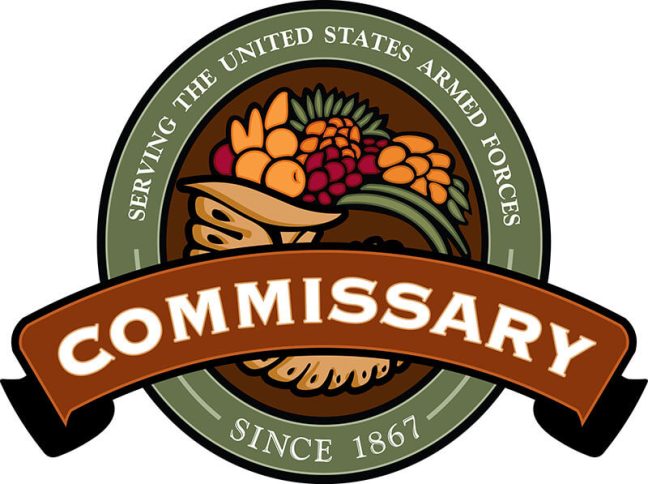
Improved in-stock rates
Improving in-stock rates is another goal for DeCA. In the past year, Hall said the in-stock rate in stores has increased from about 94 percent to 97 percent.
“It’s taken a lot of effort, but the reason that’s important is if it’s not available for purchase, the customer doesn’t have access to it. So we’re going to drive that access up. Our goal is 98 percent,” he said.
DeCA set the goal to achieve in five years but has come close to achieving it in one year.
“That’s been a very positive thing for our customers. We still have some locations where we need to get better. Guam’s always a challenge, but overall we’re at 97 percent in stock across the enterprise and very proud of achieving that standard,” Hall said.
He pointed out that the improvement is a result of “a lot of hard work” from DeCA employees.
Another goal is to have the not-in-stock with a balance on hand (NIS with a BOH) rate in the stores down to less than 1 percent.
“In other words, if it’s less than 1 percent, if it’s in the store back room, it’s pretty much on the shelf. We’ve already achieved that standard,” Hall said. “Our store personnel do a really good job of ensuring if it’s on hand, it’s on the shelf. That’s been a positive development as part of this 97 percent in-stock rate.”
Flannery added that every day, in every store, employees known as CAOs (computer assisted ordering) walk the aisles. They oversee the flow of product into the stores.
If they see a hole in the shelf, they scan it, he said. They are immediately notified if that product is in the back room, which is NIS with a BOH.
“They measure it, we get that raw number, but then they go fix it. That number was 2-3 percent out-of-stocks. That’s now below 1 percent. You measure it, you identify, you put the processes in place to fix it. That’s been a huge success,” Flannery said.
If the item is not on hand, that means it’s out of stock. That is tracked back to the distributor to try to determine the root cause, Flannery said.
He noted that DeCA has a store ordering and inventory management system, but it is only as good as the processes and the business rules around it.
“Those have really been where we’ve made those interventions,” he said. “We built in accountabilities. We measure that every week.”
Hall said the agency is moving to a new enterprise business system to help manage the business. It will be purchasing a commercial off-the-shelf system that has been proven in the industry. It will allow DeCA to have a much better rewards program and target incentives to the people who will use them.
Rivers added that the CAOs are “the backbone of the operation.”
“Those are the folks behind the scenes … they’re the unsung heroes. Without the CAOs, we wouldn’t be as successful as we are in regards to our stock management of our product.”
Investing in workforce
DeCA employees are all civilians, with the exception of five military personnel. Of the 12,500 DeCA workers, about 63 percent have some connection to the military, Hall said.
Thirty percent are spouses of service members, while 16 percent are other family members.
“So 46 percent – nearly half of our workforce – is a family member of a currently serving service member. That’s really tremendous,” Hall said.
DeCA offers a liberal leave-without-pay program for these family members, who often move every two to three years when the service member in the family is transferred to another base.
Hall said if there is an opening at the commissary, DeCA will bring them on board when they get to their new location and are ready to return to work.
“There’s no competition, no selection or anything like that,” he said. “That’s a really good program to enable our spouses and other family members to continue employment within DeCA through those frequent permanent change of station moves.”
DeCA employees receive the same benefits as other Department of Defense civilian employees. However, they are the only DOD civilian employees authorized to shop in the stores.
Commissary jobs range from cashiers and stockers to department managers, store directors, zone managers and area directors.
DeCA also offers courses at its headquarters and support center for store directors and classes related to produce, meat and food safety. It also offers them for its overseas employees.
Flannery noted that the role of store director at DeCA is “as important as it is in commercial retail.” Some of them are promoted to zone managers or area managers. “We move our best people into our biggest, fastest growing stores or where we have the need,” he said.
DeCA also is establishing exchange partnerships with the grocery industry, specifically around its expanding prepared foods program.
“One of our goals is to greatly expand the number of prepared food offerings that we have in our stores,” Hall said. “We’re establishing this partnership with two commercial entities that do very well in that so that we can send DeCA personnel to those locations and spend 90-120 days and bring those lessons learned back to DeCA, so we can get even better … we want to get really good in that space.”
DeCA also established a program with the Institute for Defense and Business in Chapel Hill, North Carolina, about a year ago to develop courses that will enable DeCA employees to better understand commercial grocery chain best practices. The program consists of academics with expertise in this area, along with mentors from the grocery industry.
“We’re really excited about this prospect of continuing that relationship and expanding our industry exchange partnership so that we can get more commercial grocery experience inside DeCA,” Hall said.
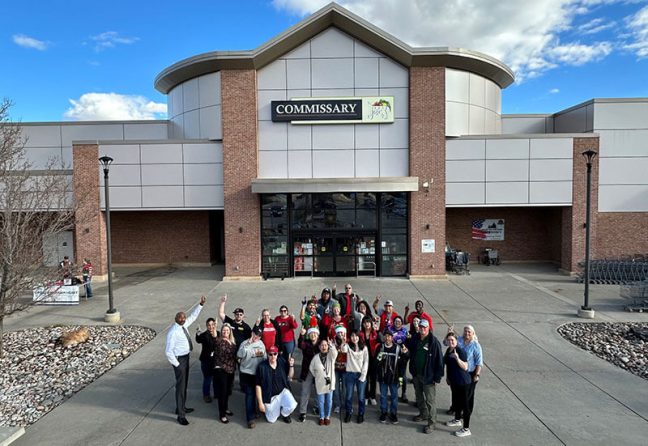
Support from supplier community
According to Flannery, DeCA’s partnership with the supplier community has been very important in achieving some of the agency’s goals.
“We can’t do what we’re doing without the supplier community,” he said. “A lot of what we’ve done over the last couple of years has been to work with that community to align on common goals and objectives, so that we create a win-win-win-win.”
He noted that DeCA can’t deliver the savings to its customers unless the supplier community helps it get the right cost of goods and understand how to create retail prices.
“When we get that benefit right, it drives revenue. When it drives revenue, it delivers more of that 25 percent savings into more patrons’ hands,” Flannery said.
He said DeCA should be “every supplier’s best customer, especially now. We’re growing faster than industry. We’ve grown over 15 percent in the last three years, and we’re non-profit. We’re never going to come back and ask for an ever-increasing percentage of margin.”
Flannery said DeCA has gotten the supplier community to re-engage in the commissary business over the last couple of years and to better understand “the importance of the patron that we serve and then working together to serve that patron. It’s been a really great story.”
DeCA works with about 20 percent more suppliers than commercial grocery, Flannery said. In the U.S., DeCA is supplied by SpartanNash, Coastal Pacific, UNFI and C&S. It also works with manufacturers. Overseas bases are supplied with the same U.S. goods.
“Part of our delivery is that taste of home,” Flannery said. “When we buy the Pampers, Kraft Macaroni & Cheese, Hellman’s Mayonnaise, you won’t find some of those brands overseas. We purchase them here, put them on containers and send them to our overseas bases to make sure that our patrons have U.S. goods – the taste of home.
“Any supplier who’s got a product that our patrons want, we’re going to want that product in the store. Those new, innovative products that are the fuel for growth, we want to be first to market.”
Suppliers interested in doing business with DeCA can go to commissary.com for more information.
Overall, DeCA is committed to delivering exceptional value and convenience to military families. Its ambitious growth plans and focus on customer savings position the agency to be a vital resource for the military community for years to come.

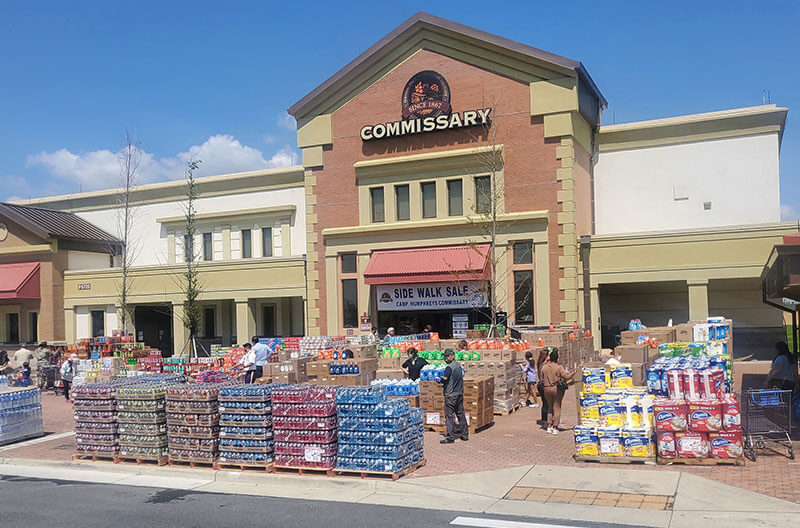
Great article @treva bennett! I learned a lot.